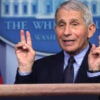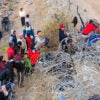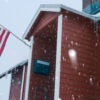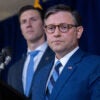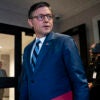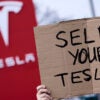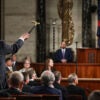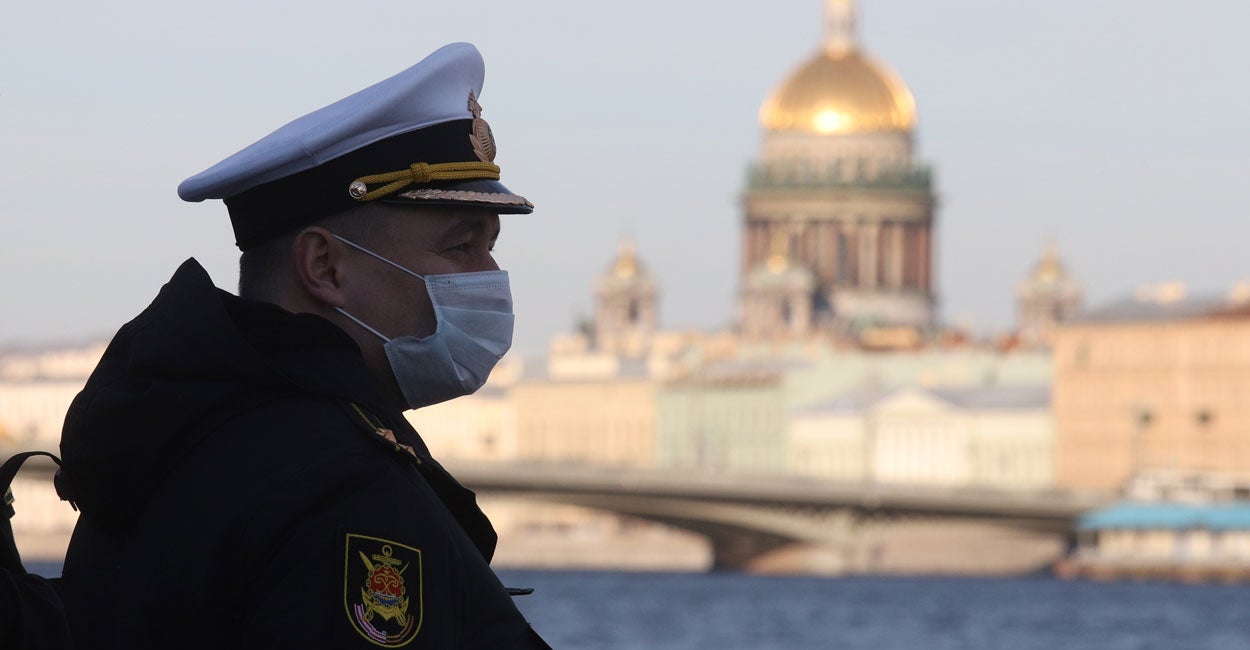KYIV, Ukraine—As countries across Europe begin scaling back their coronavirus lockdowns, a snapshot of Russian military activities underscores that the Continent’s security problems before the pandemic haven’t gone away.
NATO fighter jets intercepted Russian military aircraft approaching allied airspace three times between April 28 and April 29.
Combined Russian-separatist forces—operating under Moscow’s command—continued their daily drumbeat of shelling Ukrainian troops and towns in Ukraine’s eastern Donbas region.
The Daily Signal depends on the support of readers like you. Donate now
“The coronavirus crisis doesn’t change Russian foreign policy one inch,” said Marcel Van Herpen, director of the Cicero Foundation, a Dutch think tank that specializes in Russian and European affairs.
“On the contrary, it will offer new chances for Russian meddling in Eastern Europe, as the U.S. and the EU will turn inward to solve the post-COVID-19 economic and social problems,” Van Herpen told The Daily Signal, referring to the disease caused by the novel coronavirus.
On April 28, Russia’s forces shelled civilian homes in the eastern Ukrainian town of Zolote-4. One Ukrainian soldier died from enemy fire that day. Amid more shelling, one Ukrainian soldier was wounded April 29, and two more were wounded April 30, Kyiv reported.
“We have had to face the grim reality of a world upended by the coronavirus pandemic. The outbreak has changed our lives, but the behavior of Russia-led forces in the Donbas has remained largely the same,” James Gilmore, U.S. ambassador to the Organization for Security and Cooperation in Europe, said during an April 30 meeting in Vienna.
In April 2014, Russia carried out a hybrid warfare invasion of the Donbas. Since February 2015, a shaky cease-fire, known as Minsk II, has kept the war locked along a relatively static, entrenched front line.
Today, Ukrainian troops remain engaged in daily combat against a combined force of Russian regulars, pro-Russian separatists, and foreign mercenaries.
This past week, OSCE monitors in eastern Ukraine reported “several thousand” cease-fire violations, Gilmore said.
Combined Russian-separatist forces “continue to violate the cease-fire with weapons that are impermissible under the Minsk agreements, violating Ukraine’s sovereignty and territorial integrity, maiming and killing civilians, and threatening critical infrastructure even during this global crisis,” he said.
‘Rock Solid’
Despite the global pandemic, Russian warplanes continue to test NATO’s air defenses in the skies above the Baltic Sea and the North Sea.
On April 28, Polish fighter jets scrambled from Estonia to intercept two Russian Tu-160 long-range bombers that were being escorted by fighter jets and a support aircraft, according to a NATO press release. Royal Danish Air Force fighter jets later intercepted the same Russian formation, NATO said.
That same day, Norwegian fighter jets intercepted another formation of Russian military aircraft, comprising Tu-22 bombers and fighter escorts, as it approached Norway’s airspace.
On April 29, Norwegian F-16 and F-35 fighters scrambled to intercept two Russian maritime patrol aircraft approaching Norway’s airspace. British Typhoon fighter aircraft reportedly joined the fray, escorting the Russian warplanes toward the North Sea.
This week’s Russian air patrols weren’t unusual—NATO jets scrambled to intercept Russian warplanes more than 200 times in 2019.
In order to protect the airspace over its Baltic member states of Estonia, Latvia, and Lithuania—three ex-Soviet countries—NATO maintains fighter jets on 24/7 alert, ready to scramble in case of suspicious air activity.
This “Baltic Air Policing Mission” dates back to 2004. Yet, aerial encounters between Russian and NATO aircraft significantly stepped up in 2014 as regional tensions flared in the wake of Russia’s invasions of Ukraine that year.
The United States and the European Union levied punitive economic sanctions on Moscow for its aggression in Ukraine. Subsequently, relations between Russia and the West have hit a post-Cold War nadir.
Using cyberwarfare and weaponized propaganda, Russia has embarked on a hybrid war blitz against Western democracies. Russia has also ratcheted up its conventional military provocations against NATO forces across Eastern Europe. Notably, Russian warplanes have made a habit of provocative flybys of NATO ships and aircraft.
On April 29, air force detachments from Spain, France, and the United Kingdom took over NATO’s Baltic air policing mission from Belgian and Polish units. The incoming fighter jet units are scheduled for a four-month deployment.
“This 24/7 mission demonstrates that our commitment to the security of our allies is rock-solid and that our vital work goes on despite the coronavirus pandemic,” said NATO spokesperson Oana Lungescu.
False Starts
Ukrainian President Volodymyr Zelenskyy swept into office in 2019 on a perceived mandate to end the war. To that end, the Ukrainian leader has made several bold peace overtures to Moscow to jump-start peace talks.
Among those gambits, Zelenskyy has authorized the unilateral withdrawal of Ukrainian forces from some front-line positions. He also agreed in principle to hold elections in the Donbas—a long-standing Russian requirement to resume negotiations.
Zelenskyy’s efforts to break the war’s stalemate spurred peaceful protests across Ukraine and a nationwide “anti-capitulation” movement. War veterans, in particular, have been outspoken in their opposition to Zelenskyy’s peace plans, demanding that he not hold elections in the Donbas until all Russian troops have left the contested territory.
If elections are held before Ukraine has full control of the Donbas, Zelenskyy’s critics contend, then Russia can influence the vote in support of its preferred candidates, giving the Kremlin virtual voting rights in Ukraine’s national legislature.
Prior to the pandemic, Zelenskyy had made some progress in negotiations with Moscow. Notably, the Ukrainian president met with Russian President Vladimir Putin for peace talks in Paris on Dec. 9.
However, the revamped peace talks have since largely stalled as both Kyiv and Moscow focus on the domestic economic exigencies of the coronavirus pandemic. Also, some say that Putin has opted to exploit the coronavirus pandemic for geopolitical gain, rather than make compromises with Zelenskyy for the sake of peace in the Donbas.
“Putin uses the coronavirus crisis to advance his pawns on the international chessboard,” Van Herpen said. “He has already asked the West to end the sanctions—without any effort from his side.”
The view from both Washington and Kyiv is that Russia is responsible for the ongoing bloodshed in the Donbas.
“The full and comprehensive implementation of the cease-fire that the Normandy leaders agreed to at the Dec. 9 summit clearly has not materialized,” said Gilmore, the U.S. ambassador to the OSCE.
“As always, it is civilians who pay the greatest price for Russia’s aggression in the Donbas,” Gilmore added.
Moscow, for its part, says Kyiv has failed to implement its end of the Dec. 9 deal by not adopting constitutional changes to grant Russia’s proxy territories “special status” within Ukraine.
“We pointed out that one of the key provisions of the Minsk agreements concerns ensuring the special status of the Donbas as part of Ukraine. This is the goal and basis of efforts to resolve the conflict,” Russian Foreign Minister Sergey Lavrov told journalists in Moscow last week, the Russian news agency TASS reported.
The Course of History
The trench war stalemate in eastern Ukraine has developed into a volatile standoff, in which Europe’s two-largest standing land armies, in terms of manpower, exchange daily fire. The conflict is always prone to escalation, and it remains a threat to regional peace.
Last week, for example, Ukrainian forces took part in a targeted strike to destroy an SUV that the Ukrainian military said was carrying several combined Russian-separatist commanders.
Ukraine has about 40,000 military personnel, supported by heavy artillery and armor, forward deployed to the Donbas. Those forces comprise some 10 army brigades in addition to air defense units, aviation units, and support personnel.
Ukraine’s strategic military doctrine identifies Russia as the country’s top security threat. Kyiv is rebuilding its military with the specific objective of defending against a Russian invasion.
To that end, Ukraine fields 250,000 active-duty soldiers—second only to Russia in manpower among European militaries.
Due to the Russian threat, NATO has rearmed and reinforced its eastern flank with rotating military forces. The Western alliance also has stepped up the pace of its military exercises to match that of the Cold War era.
Altogether, Eastern Europe since 2014 has become the most rapidly militarizing region on earth, as measured by annual defense spending increases. In short, the overall military balance of power in Europe has shifted radically in six years.
And, for now, it looks like the coronavirus pandemic won’t alter the current course of history.
“In the post-COVID19 world, the importance of deterring Russia in Europe will remain high for the U.S.,” said Marcin Terlikowski, head of the International Security Program at the Polish Institute of International Affairs. “So the importance of maintaining a good transatlantic relationship will stay an important political goal for Europe.”

